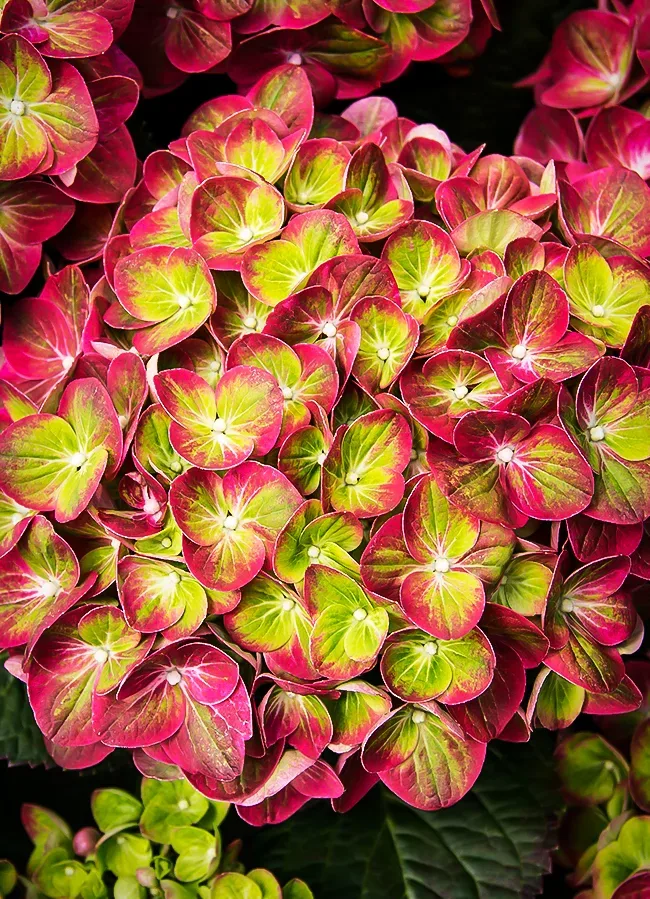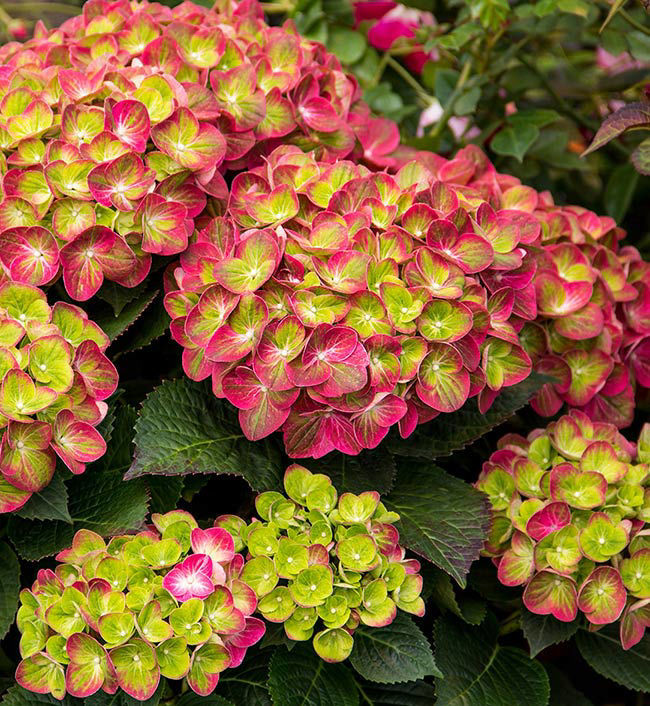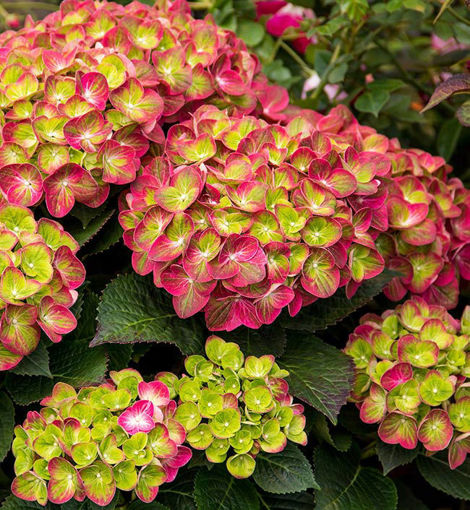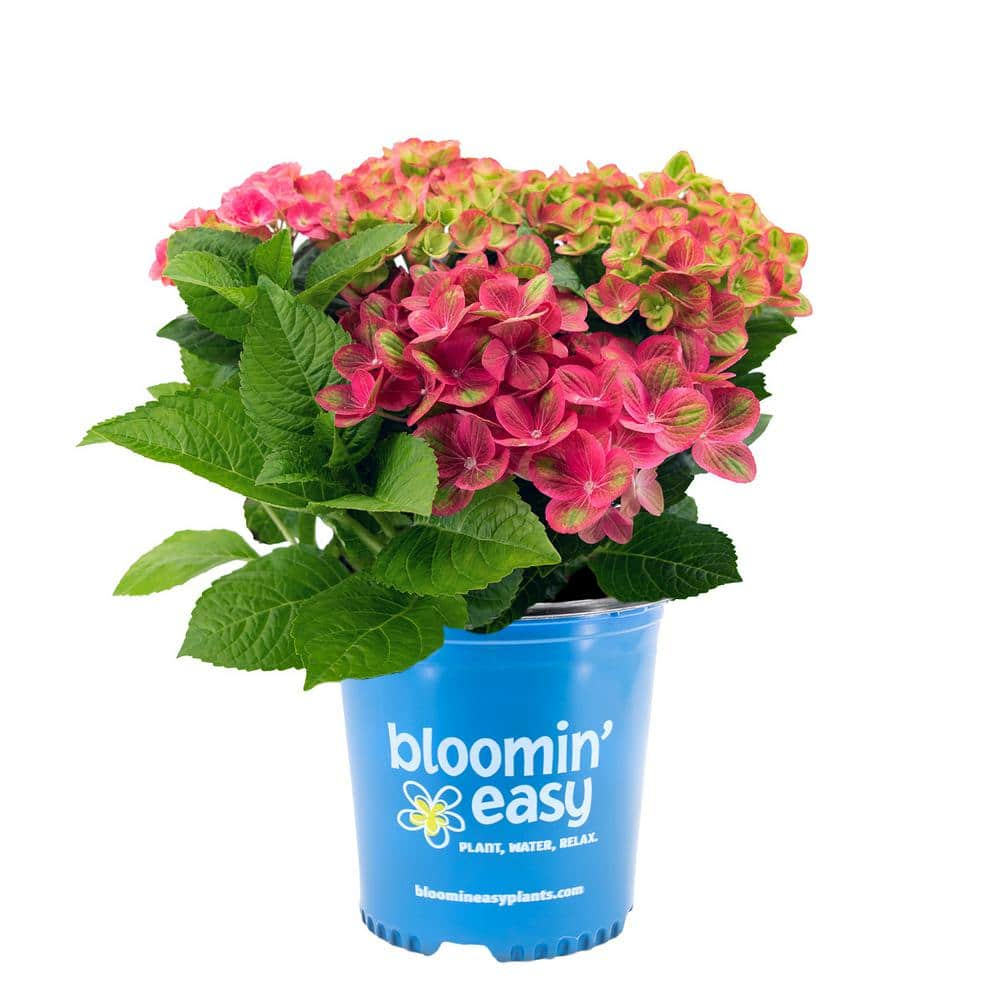Tiltaswirl Hydrangea: The Eyecatching Shrub That's
Tilt-A-Swirl Hydrangea: The Eye-Catching Shrub That's Easy to Grow
If you're looking for a beautiful and easy-to-grow shrub for your garden, the Tilt-A-Swirl hydrangea is a great option. This unique hydrangea features bicolor blooms that change color throughout the season, providing months of interest.
What is a Tilt-A-Swirl hydrangea?
A Tilt-A-Swirl hydrangea is a type of bigleaf hydrangea (Hydrangea macrophylla). It is characterized by its bicolor blooms, which are a mix of red and green. The flowers start out green in the spring, then gradually turn red as they mature. In the fall, the flowers can take on a variety of colors, including pink, purple, and blue.
Tilt-A-Swirl hydrangeas are relatively small shrubs, growing to only about 3-4 feet tall. They have a mounding habit and are covered in blooms from early summer to fall.
Where to plant a Tilt-A-Swirl hydrangea
Tilt-A-Swirl hydrangeas prefer full sun or partial shade. They are hardy in zones 5-9.
When planting a Tilt-A-Swirl hydrangea, choose a location with well-drained soil. The soil should be slightly acidic, with a pH of 5.5-6.5.
How to care for a Tilt-A-Swirl hydrangea
Tilt-A-Swirl hydrangeas are relatively easy to care for. They need regular watering, especially during the summer months. You should also fertilize them once a year in the spring.
To help your Tilt-A-Swirl hydrangea bloom its best, deadhead the flowers regularly. This will encourage the plant to produce more blooms.
Troubleshooting
If your Tilt-A-Swirl hydrangea is not blooming, there are a few possible reasons. First, make sure that the plant is getting enough sunlight. Hydrangeas need at least 6 hours of sunlight per day.
Second, check the soil pH. If the soil is too alkaline, the plant will not be able to absorb the nutrients it needs to bloom. You can test the soil pH with a home testing kit.
Finally, make sure that the plant is not being overwatered. Hydrangeas do not like wet feet.
Pests and diseases
Tilt-A-Swirl hydrangeas are relatively resistant to pests and diseases. However, they can be susceptible to aphids, scale, and powdery mildew. If you see any of these pests or diseases, you can treat them with insecticidal soap or neem oil.
Propagation
Tilt-A-Swirl hydrangeas can be propagated by taking cuttings in the spring or fall. To take a cutting, simply cut a 4-6 inch piece of stem from the plant. Remove the bottom leaves from the cutting and dip it in rooting hormone. Then, plant the cutting in a pot of well-drained soil. Keep the soil moist and the cutting will root in a few weeks.
Conclusion
Tilt-A-Swirl hydrangeas are beautiful and easy-to-grow shrubs that can add a touch of elegance to any garden. If you're looking for a hydrangea that will bloom for months, this is a great option.
The Tilt-A-Swirl Hydrangea is a truly unique and eye-catching plant. With its bicolor blooms of lime green and raspberry, it's sure to add a touch of whimsy to any garden. If you're looking for a hydrangea that's both beautiful and easy to care for, the Tilt-A-Swirl is a great choice.
These hydrangeas grow 3 to 4 feet tall and wide, and they prefer full sun to partial shade. They're also relatively drought-tolerant, once they're established.
If you're interested in learning more about the Tilt-A-Swirl Hydrangea, I recommend visiting . This website has a wealth of information about the plant, including its care requirements, growing tips, and even a gallery of photos.
FAQ of tilt a swirl hydrangea
Question 1: What is a Tilt-A-Swirl hydrangea?
Answer: A Tilt-A-Swirl hydrangea is a unique variety of hydrangea that is known for its cascading, swirling blooms. It is a deciduous shrub that grows 3-4 feet tall and wide, with dark green foliage. The blooms are typically white, but can also be pink or blue depending on the pH of the soil.
Question 2: How do I care for a Tilt-A-Swirl hydrangea?
Answer: Tilt-A-Swirl hydrangeas are relatively easy to care for. They prefer full sun to partial shade, and well-drained soil. They should be watered regularly, especially during hot, dry weather. Fertilize once a year in the spring with a balanced fertilizer.
Question 3: How tall does a Tilt-A-Swirl hydrangea get?
Answer: A Tilt-A-Swirl hydrangea typically grows 3-4 feet tall and wide. However, with proper care, it can reach heights of up to 6 feet.
Question 4: What are the different colors of Tilt-A-Swirl hydrangeas?
Answer: The blooms of a Tilt-A-Swirl hydrangea can be white, pink, or blue. The color of the blooms depends on the pH of the soil. In acidic soil, the blooms will be blue. In alkaline soil, the blooms will be pink. In neutral soil, the blooms will be white.
Question 5: Where can I buy a Tilt-A-Swirl hydrangea?
Answer: Tilt-A-Swirl hydrangeas are available at most garden centers. You can also purchase them online.
Image of tilt a swirl hydrangea
- Image 1: A Tilt-A-Swirl hydrangea bush in full bloom, with large, pink and blue flowers.

- Image 2: A close-up of a Tilt-A-Swirl hydrangea flower, showing the delicate petals and the intricate stamen.

- Image 3: A Tilt-A-Swirl hydrangea bush in the fall, with the leaves turning shades of red, orange, and yellow.

- Image 4: A Tilt-A-Swirl hydrangea bush planted in a garden, with other flowers and shrubs surrounding it.

- Image 5: A Tilt-A-Swirl hydrangea bush in a pot, on a patio or deck.

Post a Comment for "Tiltaswirl Hydrangea: The Eyecatching Shrub That's"